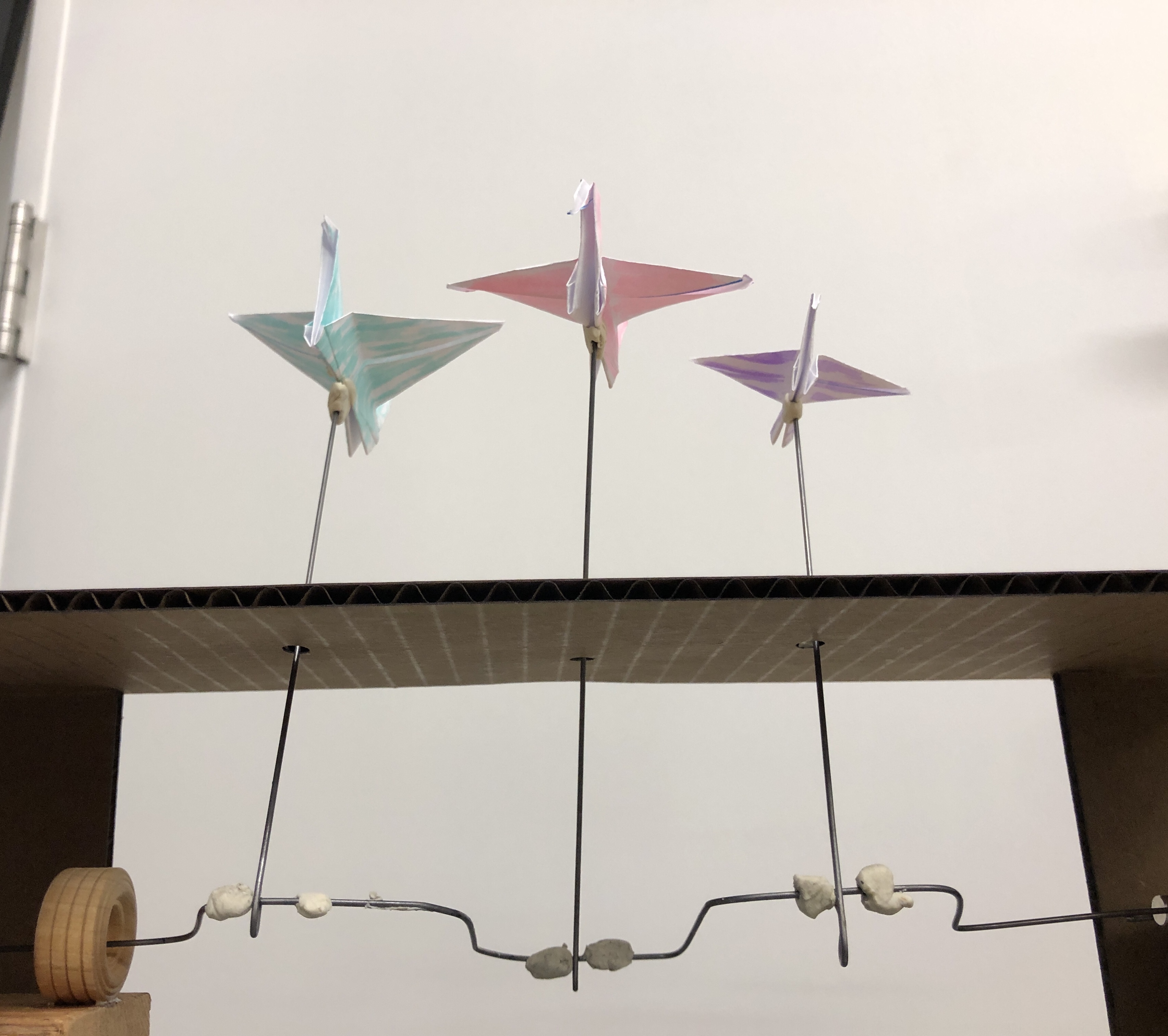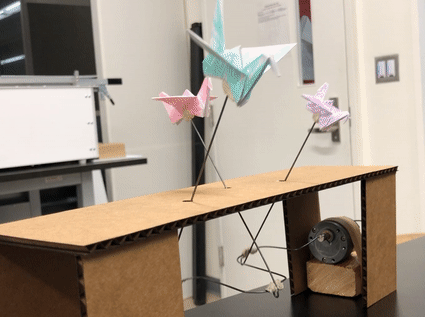Week 3: Kinetic Sculpture
Not All Those Who Solder Are Lost
This week, we were tasked with creating a kinetic sculpture -- essentially, anything that moves by human intervention or an affixed motor. I became a huge fan of Arthur Ganson after seeing his spectacular exhibit at the MIT Museum, and I perused some of his projects online, hoping to spark some inspiration. I eventually decided to do something in the style of Machine With 23 Scraps of Paper which beautifully mimics bird flight; I envisioned a majestic paper crane flapping its wings.

With some indispensable guidance from Nathan, off I set to try to make a wire axis of alternating heights that I could attach to the DC motor. This would spin three vertical wires of identical height that would push the birds wings or center of mass up and down alternatingly. I quickly came to grips, if you will, with the fact that I would need to do some pain-staking wire bending. After giving it a freehand go (and ending up with a squiggly mess), I started using the clamp and a fresh set of pliers and got dramatically improved (read: far more orthogonal) results.

I had to be very careful to measure the length of the wire to align with those of the body of the paper crane I wished to use. After bending the wire to create the appropriately sized teeth, I prepared my DC motor and successfully soldered the leads! (After my struggles in our class demo, redemption was sweet). The central mechanism of my sculpture (solder and all) is visible in the video to the right:
Cranking Cranes
Now that I had the barebones driving mechanism for the sculpture, it was time for the multifarious accoutrements. The first thing I did was to make the stand for the motor and an oppositional stand to catch the loose wire and let it both rest and revolve. I had fun working the toothy Japanese saws to make these the right size!

At the left here is my stand-making process and (nearly) finalized products. Eventually I decided that a rubber band would be more helpful for immobilizing the motor than making a gutter for it to rest in.

My next order of business was making the three rotating rods that would connect to the central axis. I wanted these to be identically long and be able to rotate around that bar with the creation of a small eye at the base of the each wire. These proved to be hard to close, but I mustered all my strength and channeled it into the needlenose pliers to close these eyelets.

Next, I embarked upon what was undoubtedly the most protracted part of the building process: making the stage layer that would constrain the movement of the revolving rods from lasercut cardboard. As shown in the picture at the left, I went through approximately 11 iterations before finding one I was happy with (and that is not to say that the final version is "perfect" by any means!). Initially, I made the holes very small, which didn't account for the precession of the slightly wonky wire; then, I made the holes much longer and wider to give the rods some leeway. After being able to better visualize its path, I could tailor the holes to make them smaller. I'd probably still prefer for them to be a bit smaller, as there's a bit of lurching forward of the outside cranes, but I am definitely happiest with this version of them all!

At each step, I'd feed the wires through and connect them to the rotating axis before letting 'er rip. I quickly realized that I had a design flaw that made my initial vision (pictured left) impossible. I realized I should have made the heights of the teeth the distance I wanted to displace the wing from the body, but I instead made it the distance between the wing and the body, which was far too big. So, instead of one crane elegantly flapping its wings, I ended up with a flock of three cranes careening up and down!

I eventually settled on three rather small cranes so the would not collide with one another while in 'flight'. Here are some photos and videos of the final product! I find that a very low voltage and current are the most pleasing speeds for this scultpure.
